The ultrasonic anemometer is is a kind of measuring instrument which uses the time difference of ultrasonic wave in the air to measure the wind speed and direction. It can accurately and quickly detect the air velocity of 0-60 m/s and wind direction of 0-360°. The air velocity and direction meter adapts to complex weather conditions. The surface has preservative treatment, strong anti-interference, automatic heating anti-frozen.
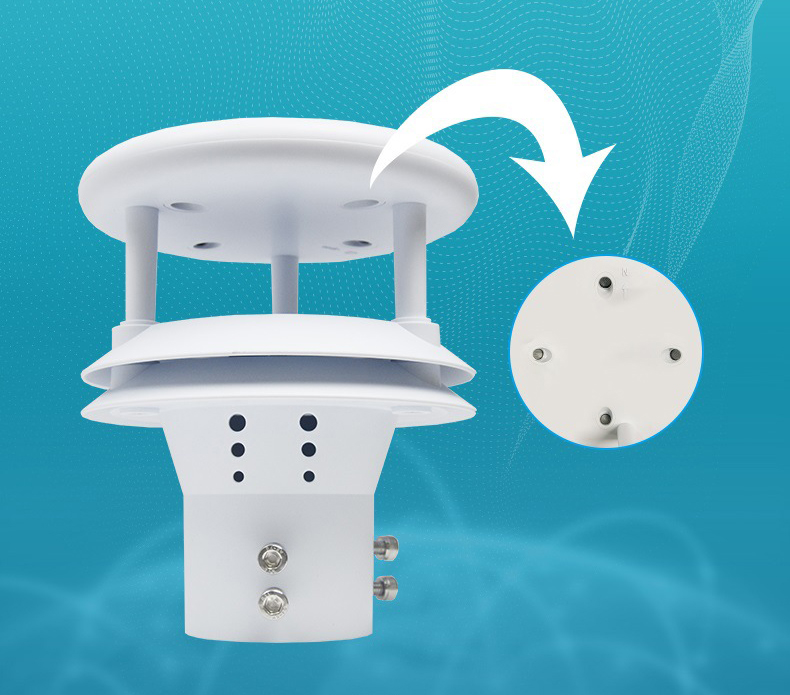
Concealed probe design
- Prevent environmental interference
- Prevents rain and snow buildup
- Prevents interference with natural wind
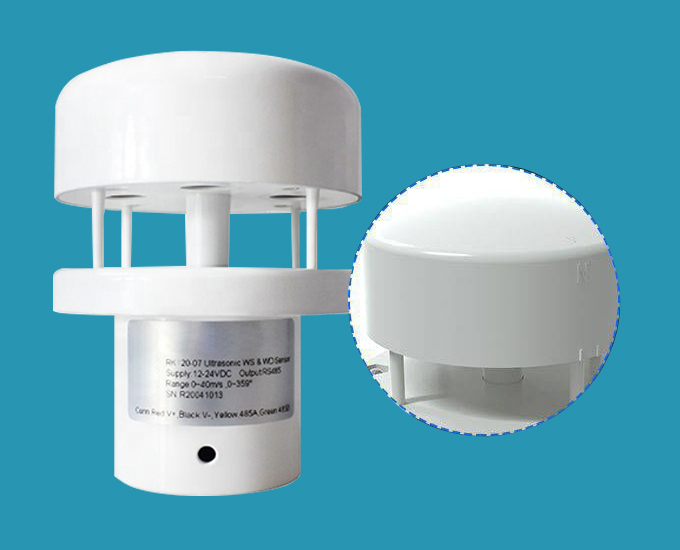
High strength ABS body
- No maintenance and field calibration
- High quality ABS body used for the whole housing
- Light weight/no moving parts/rugged and durable
Ultrasonic Wind Speed & Direction Anemometer Dimension (Unit: mm)
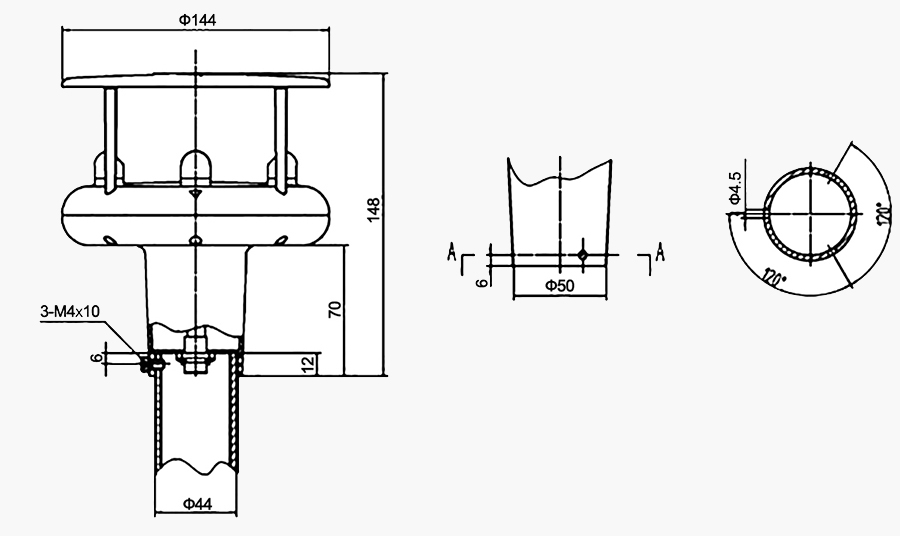
Ultrasonic Wind Speed & Direction Anemometer Installation
There are rotary adjustable mounting holes at the bottom of the ultrasonic anemometer.
When installing the wind sensor, make sure the indicator on the anemometer complies with the geographic north.
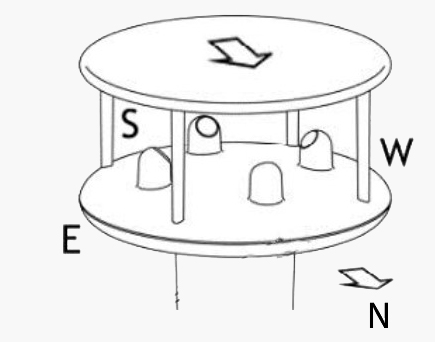
Application
Small ultrasonic wind speed and direction anemometers are widely used in the measurement of wind speed and direction in the fields of meteorology, ocean, environment, airports, ports, laboratories, industry, agriculture and transportation.
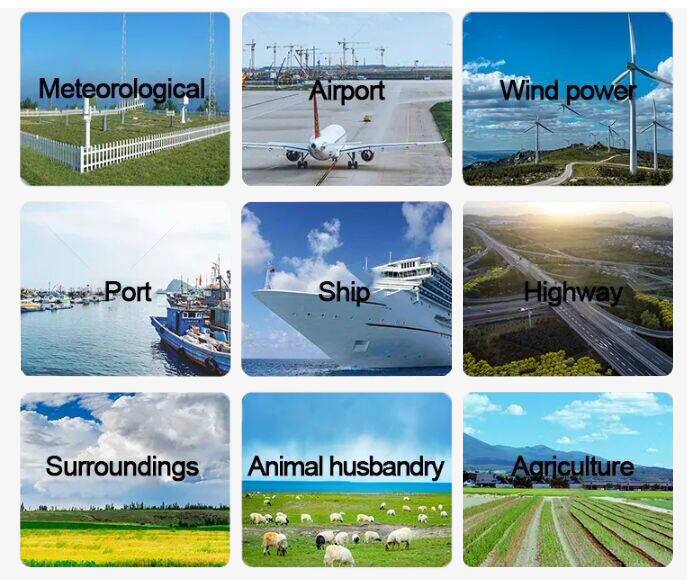
Measurement Specification
| Model | SISCO-RK120-03 | |||
| Item | Range | Resolution | Accuracy | Starting Threshold |
| Wind Speed (optional) | 0-60 m/s, 0-45 m/s | 0.01 m/s | ≤10 m/s: ± 0.2 m/s >10 m/s: < ± 2% the current value |
0.1 m/s |
| Wind Direction | 0~360° | 1° | ± 3° | 0.1 m/s |
| Atmospheric Pressure* | 150-1100 hPa | 0.1 hPa | ± 1 hPa | - |
| Extreme Wind Speed | 60 m/s | - | - | - |
*Note: The atmospheric pressure measurement function is an optional configuration, please contact us if you need it.
System Specification
| Power Supply | DC 12-24V |
| Power Consumption | <1W (Heating not activated), <3W (Heating activated) |
| Output Signal (Optional) | RS232, RS485 (Modbus/NMEA-0183), 4-20mA, 0-5V (only for wind speed & direction) |
| Operating Temperature | -40 ~ +80℃ |
| Ingress Protection | IP66 |
| Heating Power | Automatically turn on when the ambient temperature is below 0℃ |
| Electronic Compass | optional (Please contact us if you need it.) |
| Atmospheric Pressure | optional (Please contact us if you need it.) |
| Dimension | Ф 144*148mm |
| Net Weight | 0.8 kg |
| Main Material | ASA |
Q1: How do you ensure accuracy of anemometer?
A1: To make sure anemometers are reliable and precise, they should be regularly calibrated. This is the procedure of checking the accuracy of a measuring instrument – as well as the adjustment to align it with the standard. The process allows equipment to produce more accurate results than would've otherwise been possible.
Q2: What affects an anemometer?
A2: The higher the wind speed, the more power is required to keep the wire at a constant temperature. Wind speed can also be determined by measuring air pressure. (Air pressure itself is measured by an instrument called a barometer.) A tube anemometer uses air pressure to determine the wind pressure, or speed.
Q3: Does an anemometer measure wind direction?
A3: An anemometer looks like a weather vane, but instead of measuring which direction the wind is blowing with pointers, it has four cups so that it can more accurately measure wind speed. Each cup is attached to the end of a horizontal arm, each of which is mounted on a central axis, like spokes on a wheel.
Tips: Are ultrasonic anemometers accurate?
Yes, because ultrasonic wind speed measurement sensors have no moving parts, the measurements are immediate and extremely precise.
Thank you for buying industrial test and measurement equipment on SISCO.com, all products sold by SISCO and the partner cover a 12 months warranty, effective from the date of receiving the products.
What is covered?
SISCO is responsible for providing free spare parts, and free technical support to assist the customer to repair the defective products until the problem is solved.
What is not covered?
- Product purchased from anyone other than a SISCO store or a SISCO authorized reseller.
- Expendable parts.
- Routine cleaning or normal cosmetic and mechanical wear.
- Damage from misuse, abuse or neglect.
- Damage from use of parts other than SISCO approved.
- Damage from use outside the product’s usage or storage parameters.
- Damage from use of parts not sold by SISCO.
- Damage from modification or incorporation into other products.
- Damage from repair or replacement of warranted parts by a service provider other than a SISCO authorized service provider.
- Damage caused by the application environment not meeting the product usage requirements and the failure to perform preventive maintenance.

